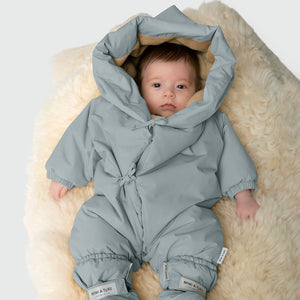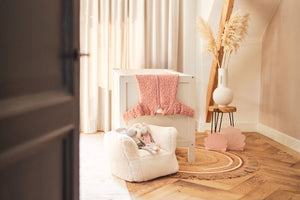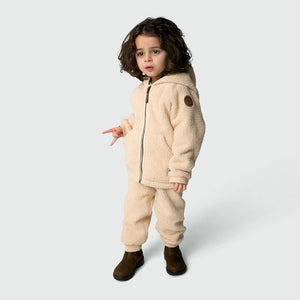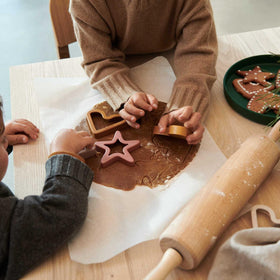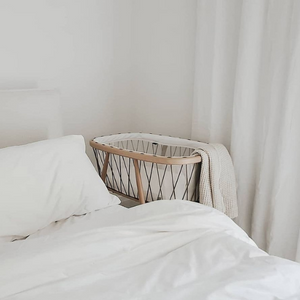
Everything you need to know about safe sleep for your baby
Ask any parent: during your baby's first year, your life will revolve around sleep (his and yours). Some babies naturally sleep longer, while others may wake up several times during the night until they are toddlers. There is no shortage of sleep advice available online, in books or from family members - which can seem confusing and inappropriate. Remember to do what's best for you and your family, while knowing the current guidelines for infant sleep safety. Here's everything you need to know to keep your baby safe, healthy, and (hopefully!) get a good night's sleep.
Alone
The safest place for your baby to sleep is in a crib or moses basket in your room - but not in your bed. Be sure to keep the room cool and smoke-free. There are ways to make co-sleeping safer, especially when breastfeeding, such as being sober and sleeping on a firm mattress with only a fitted sheet (no sheets, blankets, or pillows).
On the back
It is important to place the baby on his or her back to sleep, as sleeping on the stomach increases the rate of sudden death in infants. The prone sleeping position can block the airway or cause carbon dioxide to be rebreathed, which can lead to decreased oxygen levels.
That said, if your baby rolls over on his own during the night, don't panic. There's also no need to wake him up every time. Keep an eye on him as much as possible and gently put him back if you're too worried.
Baby's bed
Invest in a crib or moses basket that meets all current safety standards and make sure it is assembled correctly. The crib mattress should be firm and the crib should not include pillows, blankets, toys, bumper pads, etc. Your child can sleep with a light blanket around 12 months and use a pillow around 18 months. There are also firm and/or flat pillows available for smaller children. This can be a good transition to a full-size bed, which is usually installed between the child's 18th month and 3rd birthday.
Preventing sudden infant death syndrome with safe sleep practices
Sudden Infant Death Syndrome (SIDS) is the sudden and unexpected death of an infant under the age of 1 year, usually while sleeping. Babies are most at risk for SIDS between 2 and 4 months of age. Although SIDS is still largely unexplained, experts believe it occurs when there are low oxygen levels or a build-up of carbon dioxide in the blood.
While the very idea of losing your baby to SIDS is anxiety-provoking, there are a few things you can control that can help significantly reduce the risk of sleep-related complications.
Be sure to share these tips with everyone who cares for your baby, as a lot has changed in recent years.
Babies may have a higher risk of SIDS if they:
- Are placed on their stomach to sleep;
- Sleeping on a bed that is too soft or with loose blankets;
- Sleeping on a couch, chair or in an adult bed;
- Overheated during sleep;
- Exposure to cigarette smoke (exposure to secondhand smoke in the household doubles the risk of SIDS).
Safe Sleep Checklist
1. Remember the basics
As mentioned above, put your baby on his or her own back in a safe crib or moses basket. This is a must for every nap and throughout the night.
2. Use a firm mattress and a fitted sheet suitable for the crib
Use a firm mattress with a crib sheet that fits snugly to the mattress. This prevents sheets from moving around and pooling near your baby's nose and mouth - which could cause accidental suffocation.
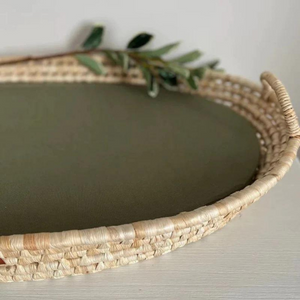
Organic fitted sheet for changing basket - Mustbebaby
3. Keep the baby's bed empty
Don't put anything in your baby's crib except your baby and a tight fitting fitted sheet. There should never be any pillows, blankets, toys, bumper pads or stuffed animals in the crib while the baby is sleeping.
4. Share your room, but not your bed
Placing your baby in a crib in your room next to your bed means you can hear and see him/her throughout the night. This is indeed the safest place for your baby to sleep according to the experts: in your room, but not in your bed. However, the truth is that many parents around the world share the bed with their children.
Co-sleeping has advantages, such as:
- Simplified night feeding;
- Easier breastfeeding;
- Being more in tune with baby's breathing;
- Psychological and emotional benefits such as greater closeness to parents, lower stress levels and body temperature regulation;
- May lead to a better night's sleep for both parents and baby.
When it comes to your sleeping choices, each family needs to make their own informed decisions. If you choose to sleep with your baby, make sure you are sober and non-smoking, that you never sleep on a chair or couch, and that your bed is firm with no extra bedding. It is safer to sleep together if you are also breastfeeding.
5. Avoid over-covering your baby
While your first instinct may be to keep your baby warm and bundled up, it's more important to keep him or her from getting too hot. The room in which he sleeps should be kept between 65° and 68°F (18° to 20°C). When choosing muslin or sleeping bags, you want to avoid thick, heavy fabrics that can raise your baby's temperature and make him sweat. Instead, choose a breathable, sweat-wicking fabric like bamboo or organic cotton, and keep any fabric away from the baby's face or head to avoid accidentally covering her while she sleeps.

0-3 Months Ribbed Knotted Newborn baby Gown - Mushie
6. Forget the blankets
All those precious baby blankets you got as gifts and can't even use them... Save them for cuddles and playtime, and use a sleeping bag or swaddle cloths for sleep instead. Many newborns are comforted and soothed by swaddling techniques, and it's one of the safest ways to keep them warm. Swaddle them well (but not too well!) with a light muslin cloth, always keeping the swaddling blanket away from their face.
Organic Swaddles baby blanket - La petite leonne
7. Share with your friends
Knowing the appropriate precautions is a great start, but you also need to It's not enough that you know the appropriate precautions - you need to share them with everyone who will be caring for your baby, including sitters, family members, etc. Guidelines have changed over the years, so it's important to update everyone, whether they had children five or twenty years ago.
8. Be careful when buying baby products
Let's face it, not all baby products are created equal. At Jourès Canada, we make sure that our products are exceptional, safe, certified organic for the most part, and environmentally friendly. Each product, each brand is carefully selected.
Managing SIDS anxiety
As a new mom, your body is flooded with hormones and emotions, which can contribute to feelings of anxiety. Add to that a tiny, precious newborn for whom you are responsible and accountable for their well-being and safety. It can be difficult at times to keep our thoughts from running in circles. Keep in mind that the risk of losing your baby to SIDS is very low, that the risk decreases as your baby grows (most occur before 6 months of age), and that safe sleep practices greatly reduce the risk of SIDS.

